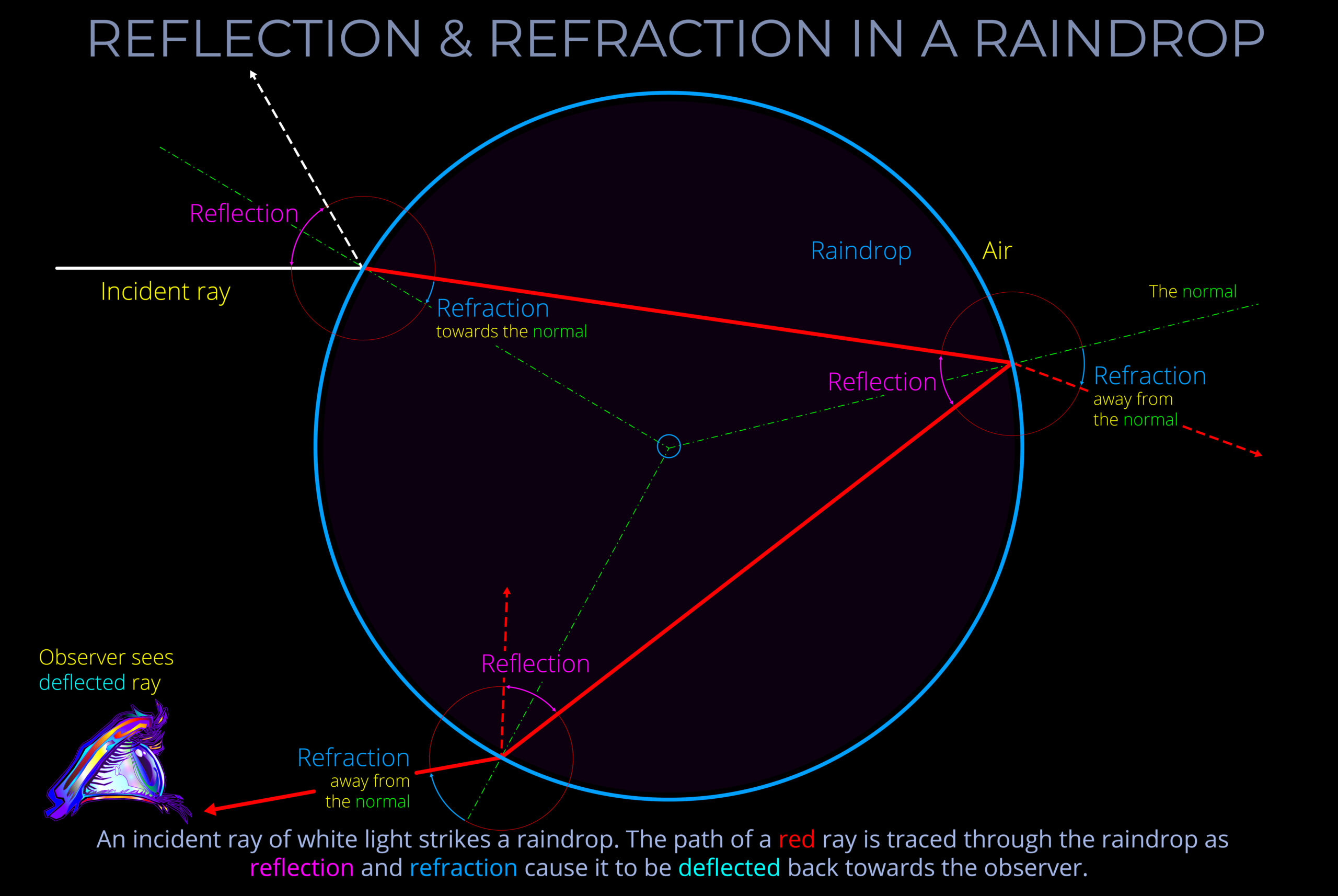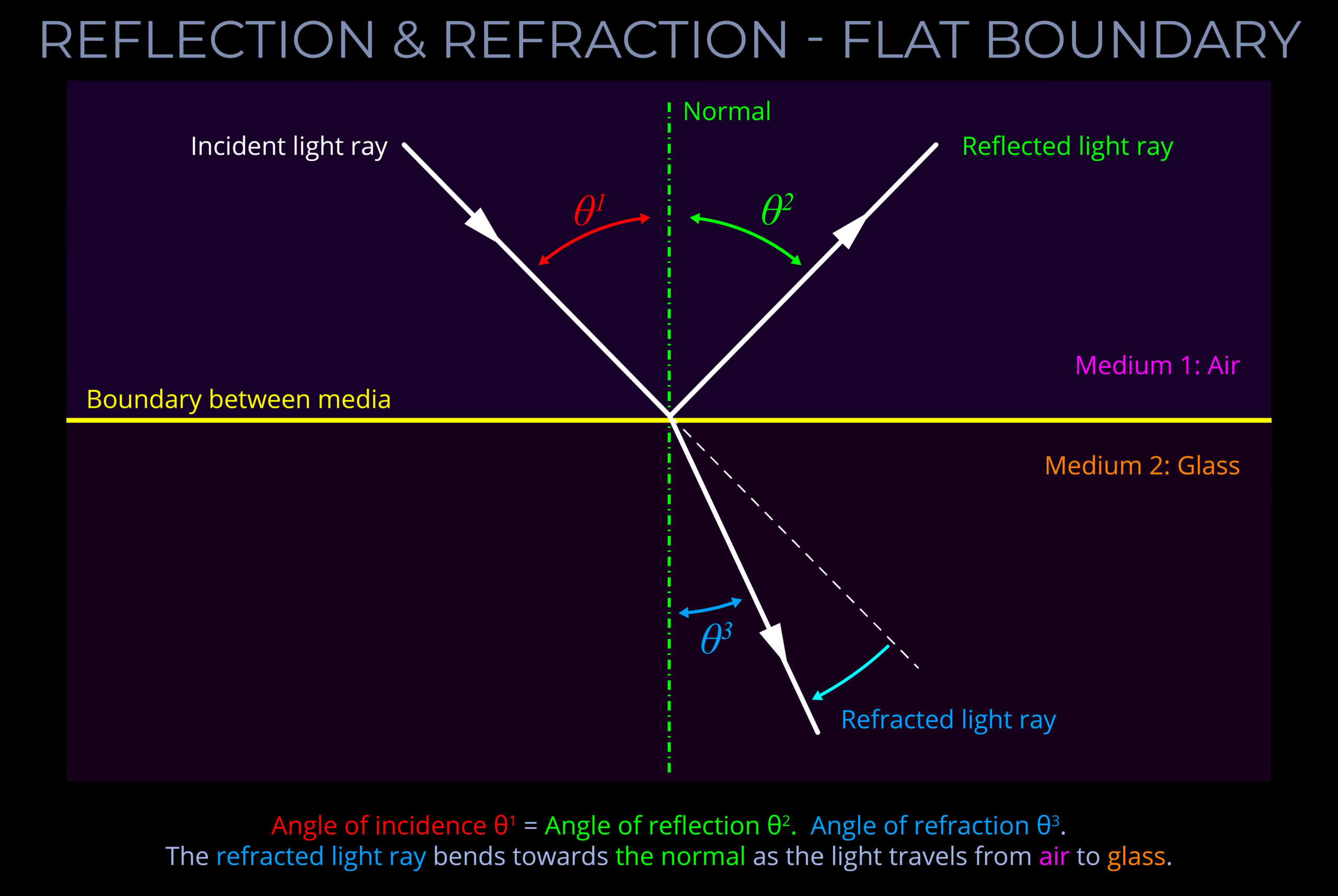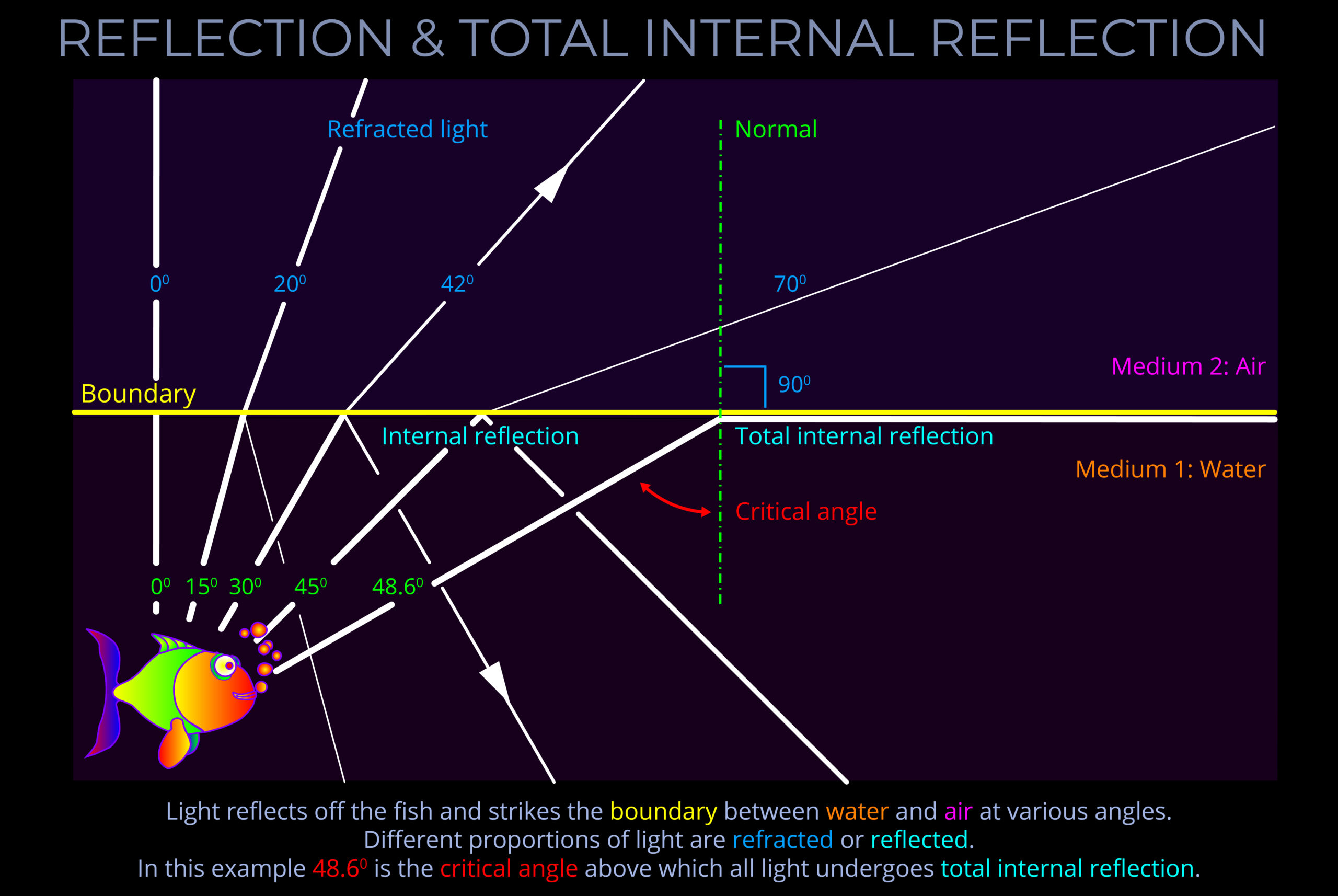Diffuse reflections occur when light scatters off rough or irregular surfaces, such as matte or textured surfaces. The scattered light reflects in various directions, leading to a lack of clear images or sharp details in the reflection.
- Most objects produce diffuse reflections as light scatters off their surfaces in random directions. It is often almost impossible to pick out the shape or colour of objects in a diffuse refection.
- All objects obey the law of reflection on a microscopic level.
- If the irregularities on the surface of an object are larger than the wavelengths of the incident light, light reflects in all directions and produces diffuse reflections.
- A diffuse reflection is easily distinguished from the mirror-like qualities of a specular reflection.
- Diffuse reflections occur when light scatters off rough or irregular surfaces.
- When microscopic features on a surface are significantly larger than the individual wavelengths of light within the visible spectrum, each wavelength of light encounters bumps and ridges exceeding their size.
- Instead of reflecting neatly in one direction, the light scatters in different directions.
- In this case, scattering doesn’t happen completely randomly. The surface features influence the direction of the scattered light, depending on the angle of incidence and the specific bumps and ridges it encounters.
- This scattering creates diffuse reflections, responsible for the soft, uniform illumination seen on textured surfaces like matte paint or unpolished wood.
- In the case of a matte phone screen, for example, the light doesn’t form a clear reflection of your face but rather creates a soft, hazy glow due to the scattered light.
- Conversely, when microscopic features are smaller than individual wavelengths of light within the visible spectrum, the light follows the law of reflection, bouncing off at an angle equal to the angle of incidence.
- This creates a specular reflection. For instance, when sunlight hits a polished metal surface or a glass mirror, the result is sharp, well-defined reflections, as seen in mirrors or polished metal surfaces.


